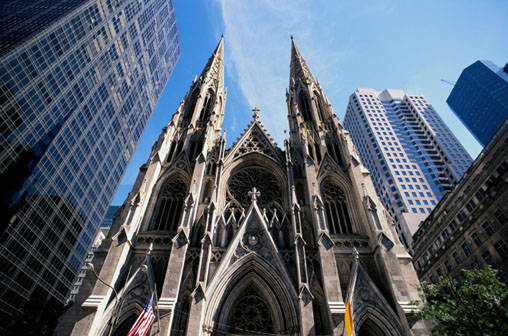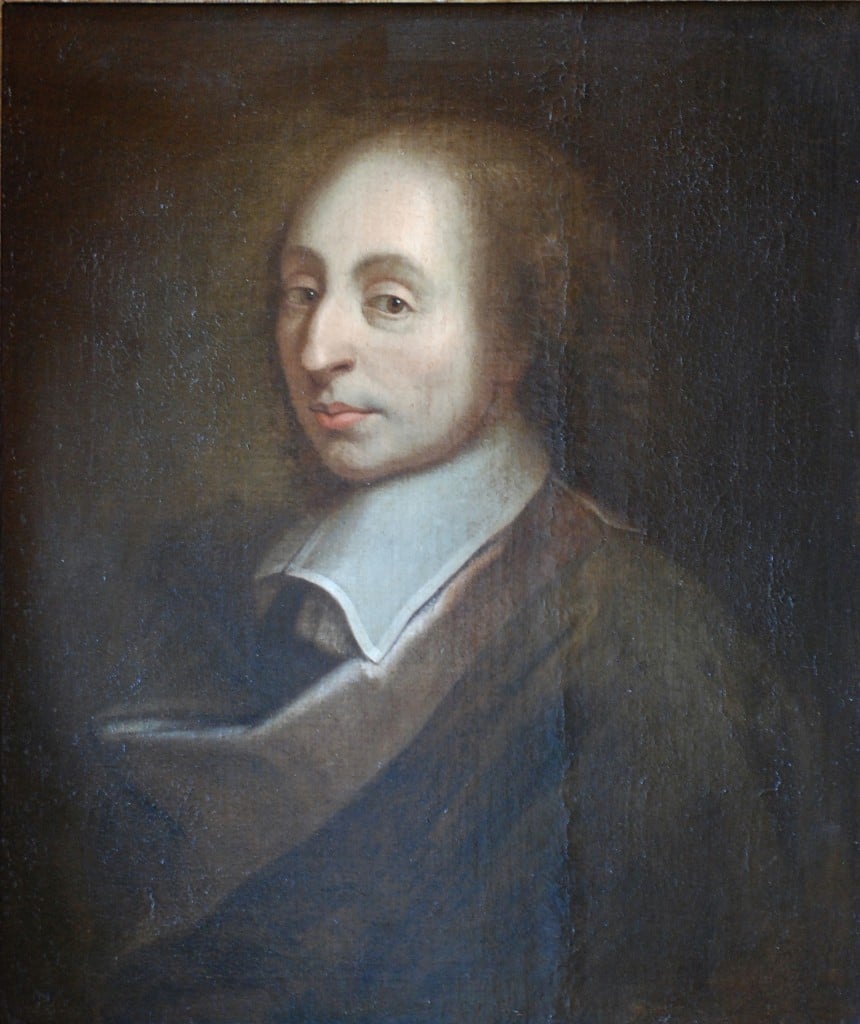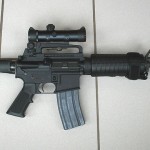A few days ago, I shared a few thoughts of a convert named Robert Hugh Benson on how the Church views Jesus Christ, yesterday, today, and until the end of time.
While reading his thoughts (continued below), ponder the radical idea that one day, you and I may actually be considered “early Christians,” and how as Catholics, we are the Church right here, and right now.
2. A second point illustrated by this belief is the extraordinary importance attached by Catholics to actual external membership in this Society. It is perfectly true — and we are not in the least ashamed of it — that we will compass the whole world to make one proselyte; it is true also that we regard with the most extreme horror those unhappy persons who once members of the Church are no longer so.
To the Protestant, of course, such an attitude of mind is inconceivable; for the Protestant, properly so-called, has no idea that a human society can be anything besides human. The Protestant may think that this or that communion is better than the rest; he may desire his friends to belong to that which he considers best; he may regret it when they leave it. But to the Protestant there is not anywhere on earth a society other than human — a religious club or school, that is to say, to which it is advantageous or disadvantageous to belong. He regards therefore the Catholic who will not sit down at table with an apostate, or the convert who by his conversion ruins the peace of his family, as an inhuman monster who sets a greater value on his own opinions than on the most sacred ties of blood or charity. And from his own point of view, upon his own premisses, the Protestant is perfectly right.
But to the Catholic who sees in the Church a human society (often terribly human), but also a Body in which God dwells, an organism composed of countless individual cells, but indwelt by a Divine Personality — a Catholic who believes that this Society is actually redemptive of the human race, as well as the actually Divine Teacher — more than a school of thought, more than the best religious club in existence, more than theAmbassador of God, more than the Bride of Christ — to the Catholic who believes that the Church is not one among ten thousand, but One, unique, singular and final, between whom and other religious bodies there is no more comparison than between the creature and the Creator — to him, membership in that body, the position of a cell in that organism, is the one thing to which no other can be preferred; and the loss of that membership the one supreme catastrophe or crime. Certainly the Catholic holds that it is possible to belong to the Soul of the Church without external membership in the Body; it is possible, where there is no fault on the individual’s side, that he may be united inwardly to the Person who inhabits that body; but such is not God’s primary intention, and to forsake the Body is to forsake the soul. In any case the individual loses enormously by being forced to stand alone, without that grace and strength of unity which external membership in the external body can alone confer.
3. A third point we must notice is the following: On the Catholic hypothesis we have present upon earth in the Catholic Church that same personality and energy as lived upon the earth two thousand years ago in the Figure of Jesus Christ. And we have the same environment — namely, the human nature of the world, human ambitions, interests, virtues, vices, circumstances, strengths and weaknesses, now as then. We should expect to find then, if the Catholic hypothesis is true, the same results now as then. So far as Jesus Christ was accepted or rejected then bythe world into which He came, so will He be accepted and rejected now, and by the same kind of people for the same kind of reasons. It resemblesthe repetition of a chemical experiment. If there is brought to bear under certain circumstances upon certain elements a particular force, the same results will always be obtained. It will be a proof of the identity of the force that, given the same conditions, the same result is so produced. If, then, we find in the history of the Catholic Church the same psychological situations as those recorded in the Gospels continually reproduced under similar circumstances — if we find, that is, Peters and Judases and Pilates swarming round the Church’s progress through the ages — if we find that the same comments are made, the same paradoxes generated, the same accusations leveled, the same criticisms, the same bursts of flame and thunder — if we find the lepers healed, the dead raised, the devils cast out, and the same explanations offered of these phenomena by theincredulous — if we find the same amazing claims uttered to the world, and the same repudiations, demurrings, and acceptances of those claims — if, in short, we find that in the Catholic Church, and the Catholic Church only, the endless intricacies and phenomena recorded in the Gospels reproduced on the stage of human history, the conclusion will be practically inevitable that the same Personality that produced those phenomena then is reproducing them now; and that the Catholic claim to possess Jesus Christ in a unique manner in herself is not unwarranted. If thecircumstances are the same and the phenomena are the same, the force must be the same.
There are certain arguments drawn from the Gospels in defense of the Divinity of Christ; for example, the story of the Resurrection. Now, if thenarrative of the Resurrection could once be accepted as literally true, as it is there recorded, I imagine that very few persons would be found to deny the Deity of Christ. But it is exactly the apparent impossibility of proving that the narrative is true which holds many minds back from theacceptance of the full Christian position. “That is all very well “— says such a man —” but how can I be certified that He did rise again? It was a credulous age, full of expectation of the marvelous. Those who are reported to have seen Christ risen are not altogether satisfactory witnesses; there are at least superficial discrepancies in the Four Gospels; further, there are innumerable difficulties of Biblical criticisms. I am not, therefore, prepared to stake my whole existence on a doctrine which I cannot possibly verify. He may have risen; He may not have risen. I was not there, and I did not see it. On the whole, however, it seems to me more likely that the Evangelists deceived or were deceived, than that Christ was very God. Both alternatives are perhaps unlikely; but I prefer that which seems to me the less unlikely of the two.” So, too, with other similar arguments drawn from the Gospels in defense of Christ’s Divinity.
Now the method I propose to follow in these pages meets, I think, at any rate indirectly, the difficulties of such a critic. It is true that I cannot demonstrate to the senses the physical Resurrection of Jesus Christ; but if it were possible to show that the phenomenon of Resurrection is characteristic of Catholicism; that Jesus Christ does, not once or twice, but repeatedly, rise again in the Catholic Church, rolling away stones far greater than that which lay on His sepulcher in the garden — if it were possible to see Him passing through doors more tightly closed than those ofthe upper room; coming through gardens in the dawnlight to lover after lover — if, in a word, this “sign of the Prophet Jonas” were a sign of Catholicism everywhere and always, it would create the strongest possible presumption that the Gospel narrative was nothing less than sober fact. And if, in addition to this, it were possible to show that all those other symptoms of His Divinity recorded in the Gospels were present in Catholicism — if His progress through the ages were seen to be accompanied by bursting tombs, opening eyes, the feeding of multitudes, and, above all, that strange aroma of Divinity attributed to Him then, the argument would be vastly increased in significance.
Somewhat parallel to this is the observation made by Mr. Mallock in one of his books. “I can understand,” he says, in effect (though he is not a Christian), “I can understandthe Catholic claim, though I cannot understand any other. The Church says to her children, you must believe these things because I tell you that I witnessed them myself, and you know that I am trustworthy. I do not refer you merely to written books, but to my continuous consciousness that is called Tradition. You can believe the Resurrection securely because I was there and saw it. I saw, with my own eyes, the stone rolled away; I sawthe Lord of Life come out; I went with the Maries to the tomb; I heard the footsteps on the garden path; I saw, through eyes blind with tears but clear with love, Him whom my companion thought to be the Gardener.” This, says Mr. Mallock, is at any rate an intelligible and reasonable claim.
Now this, more or less, is an illustration of the way I am attempting to argue. I am not referring simply back to written records, even though personally I may believe those records to be utterly trustworthy ; but it is my hope to present, so to speak, the Catholic Church as I know her myself, that you may examine her for yourself. It is my hope to draw attention to what may be called a “personage” now living upon earth whose consciousness runs back for two thousand years, one who has certain characteristics, instincts, and methods that are among her best credentials. And it is my further hope that, comparing what you can see of her with the written papers she holds in her hands, you may identify her for what she really is, and see in the persistence of that character for so long, as well as in her other credentials, at least a strong presumption that she is as unique as she claims to be; and that no hypothesis, except her actual Divinity, will adequately explain the phenomena of her life. In this manner, too, it is possible to fill up even what appear lacunae to some minds in the written record. If you have two old MSS., and find that where they are legible they agree perfectly, you are tolerably safe in filling up the illegibilities of one from the clear writing of the other. If you find that in numerous points the Living Church reproduces perfectly the clear testimony of the Gospels, you are justified in accepting the witness of the Church on further points in which the Gospel appears to you doubtful or difficult.
You can read more of Monsignor Benson’s argument on the YIMCatholic Bookshelf.












